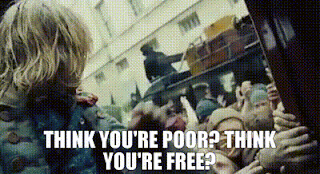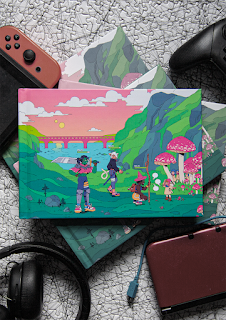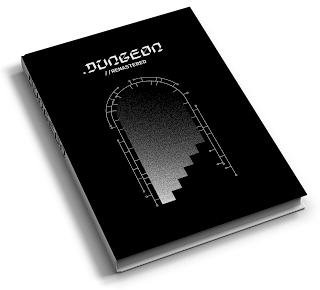The Premise
Sam Dunnewold, game designer and host of Dice Exploder, recently challenged those of us in the Dice Exploder Discord server with too many opinions and too much time on our hands to come up with our own personal answer for a hypothetical person asking, "Hey, I'm new to RPGs but excited to dive in. What should I read and play?" The main meat of this answer would need to include:
- 3 blog posts/theory pieces/podcast episodes/videos/other pieces of media about playing RPGs or RPG game design
- 1 game people should read and play
- Context for the above
- A paragraph or so of advice
This is my best attempt to adhere to these criteria. Honestly.
3 pieces of media
1. "The Carrier Bag Theory of Fiction" from Dancing at the Edge of the World by Ursula K. Le GuinWe're starting off heady here folks! Ursula K. Leguin never made TTRPGs herself (to the best of my knowledge) but her influence can/should be felt far and wide. My first recommendation is this essay because I find it aspirational - and because I don't fully understand it myself. Please take the time to read it for yourself, at the link it's just over 8 pages long and the margins are large.
She proposes a fundamental restructuring of how we see narrative, story, Heroes, heroism - one that is long overdue in literature at large but especially here in an artform still so strongly influenced by wargaming. How might TTRPGs look different if we acknowledge them as carrier bags, places where we store things we find interesting, tragic, tasty, worth sharing? I don't know - but maybe if enough people read this essay one of you can help figure it out and then let me know.
2. "Real Enough: The Reality Our Games Make" by Lucrécia Ludovico Alves
This is a bit of a sneaky recommendation, as it's essentially a plug for the Split/Party substack as a whole, but this particular piece has stuck with me ever since I read it for the first time. Much like Le Guin's essay, Alves is grappling with big concepts here and I don't necessarily feel like I fully understand it. Obviously I recommend that you read it, but you're going to want to give yourself some time to do so. It's dense, theoretical, and has considerably more citations than most TTRPG media - but it's worth it.
The argument boiled down, as I see it, challenges how we see characters in TTRPGs and how we see ourselves. Essentially it asks, "Oh you think you're more real than your character? Prove it." And the thing is? You can't. We wield interpretive repertoires to instill meaning and reality in ourselves just like we weave backstory and motivation into our characters. And the real kicker? The line that I have made room for in my head like a treasured friend?
I am made true and real every day. I am made real by you, reader, reading me; or something close enough.
Think you're real? Think you're true?
Only insomuch as everyone else conspires to make you so. And in the end, how different is that from a table of players agreeing to immanentize their characters?
3. "Ritual in Game Design" by Meguey Baker
I don't know if it counts as beginner's TTRPG if the Bakers don't show up, so here's a wonderful (and actionable!) piece from Meguey Baker about the role that ritual plays in both the playing and reading/writing of games. Not all games must involve ritual, but I would be hard pressed to think of a better description of TTRPGs than as "intentional contained conscious creative action." By reading this essay, you'll be better equipped to schedule, run, play, and write games.
"1" game: .dungeon and/or .dungeon//remastered by snow
Few people understand the TTRPG milieu better than snow, and this game/these games are a masterclass in displaying that. Not only are they gorgeous and simple to learn, they blur the lines between in-game and away-from-game, gameplay and secondary storytelling (to borrow a term from Alves' piece above), the character and the player. Masquerading as just another fantasy TTRPG, snow's metagame of playing players playing characters in an MMO opens up incredible opportunities for joy, humor, connection, and art.
...I've already used up my paragraph of advice, huh?
Well too bad! You're not my dad and you're not a cop! (Unless you are my dad or a cop, in which case "...how did you find this?" and "Leave!" respectively.) In all seriousness though, my opinion should mean nothing to you except to the extent you find it useful. As Alves says, "I have no prescriptions for you." (Un)Fortunately, the best way for you to get into TTRPGs is to do it, and no one can tell you the 'right' or 'wrong' path to it. Just, y'know don't get sucked into endless cyclical discourse, don't give bigots your money, and for god's sake don't let big companies create walled gardens to enclose what is otherwise a hugely freeing experience that defies boundaries and .







No comments:
Post a Comment